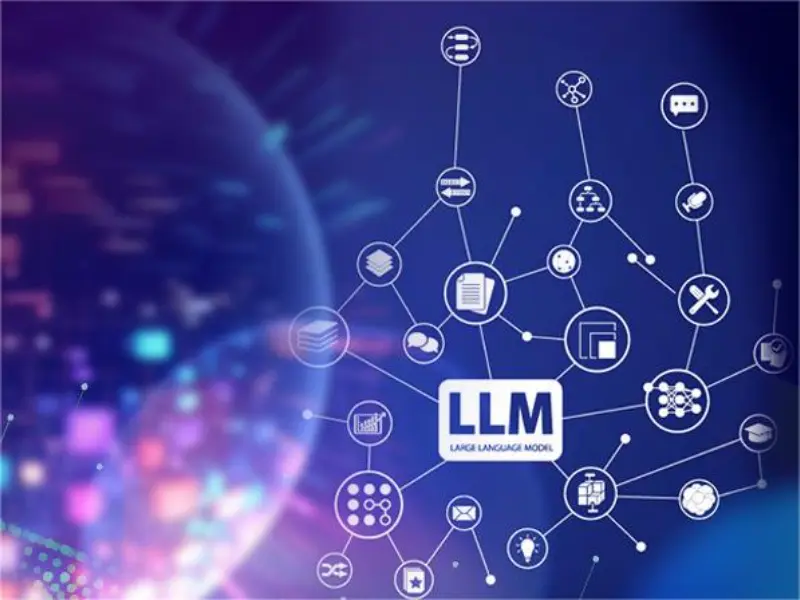- LLMs are advanced AI models that have been trained on massive amounts of text data to understand and generate human-like language. They are built using deep learning techniques, specifically leveraging architectures like Transformers.
- Some notable LLMs are Google’s PaLM and Gemini, OpenAI’s GPT series, xAI’s Grok, Meta’s LLaMA, Anthropic’s Claude models, Mistral AI’s open-source models, and Databricks’ open-source DBRX.
- Creating a large language model requires significant computational resources, expertise in machine learning and natural language processing, as well as adherence to ethical guidelines regarding data privacy, bias mitigation, and responsible AI deployment.
Large Language Models (LLMs) are artificial neural networks, focusing on processing textual data and are primarily used to generate textual content similar to human language. Creating large language models requires a lot of computer science expertise and adherence to the ethics of AI deployment.
What are large language models?
LLMs are advanced AI models that have been trained on massive amounts of text data to understand and generate human-like language. They are built using deep learning techniques, specifically leveraging architectures like Transformers.
Also read: What is the difference between generative AI and LLM?
LLMs are characterised by their immense size, typically having hundreds of millions to billions of parameters, which enable them to capture complex patterns and nuances in language. LLMs can perform a wide range of natural language processing tasks with impressive accuracy and fluency.
The training process for LLMs involves exposing the model to vast quantities of text from diverse sources, such as books, articles, websites, and other written materials. This exposure allows the model to learn the statistical relationships, semantic meanings, syntax, and grammar rules of language.
Some notable LLMs are Google’s PaLM and Gemini, OpenAI’s GPT series, xAI’s Grok, Meta’s LLaMA family of open-source models, Anthropic’s Claude models, Mistral AI‘s open-source models, and Databricks‘ open source DBRX.
The largest and most capable, as of March 2024, are built with a decoder-only transformer-based architecture while some recent implementations are based on other architectures, such as recurrent neural network variants and Mamba (a state space model).
How to create a large language model?
Creating a large language model requires significant computational resources, expertise in machine learning and natural language processing, as well as adherence to ethical guidelines regarding data privacy, bias mitigation, and responsible AI deployment. The following key steps and considerations were involved.
Also read: HPE brings LLMs to Aruba as AI takes over the network
Define objectives
Determine the specific goals and applications for which you want to use the language model. This could include text generation, translation, summarisation, question answering, sentiment analysis, or other natural language processing tasks.
Data collection and preprocessing
Gather a large and diverse dataset of text that aligns with your objectives. This dataset should cover a wide range of topics, styles, and domains to ensure the model’s robustness and versatility.
PrClean and preprocess the text data to remove noise, standardise formatting, handle special characters, tokenise the text into words or subwords, and perform other necessary preprocessing steps.
Choose architecture
Select an appropriate architecture for your language model, such as Transformer-based architectures like BERT (Bidirectional Encoder Representations from Transformers), GPT (Generative Pretrained Transformer), or T5 (Text-to-Text Transfer Transformer).
Training and evaluation
Train the language model using the preprocessed text data and fine-tuning techniques. This involves optimising model parameters, adjusting hyperparameters, and using techniques like transfer learning to leverage pre-trained models and accelerate training.
Evaluate the performance of the trained language model using validation datasets and metrics relevant to your objectives, such as accuracy, perplexity, BLEU score (for translation tasks), or ROUGE score (for summarisation tasks).
Fine-tuning
Fine-tune the language model further on specific tasks or domains to improve its performance and adaptability for real-world applications. This may involve additional training with task-specific data and fine-tuning hyperparameters.
Up to 2020, fine-tuning was the only way a model could be adapted to be able to accomplish specific tasks.
Deployment
Deploy the trained language model in production environments, integrate it with applications or systems that require natural language processing capabilities, and continuously monitor its performance and feedback for iterative improvements.

